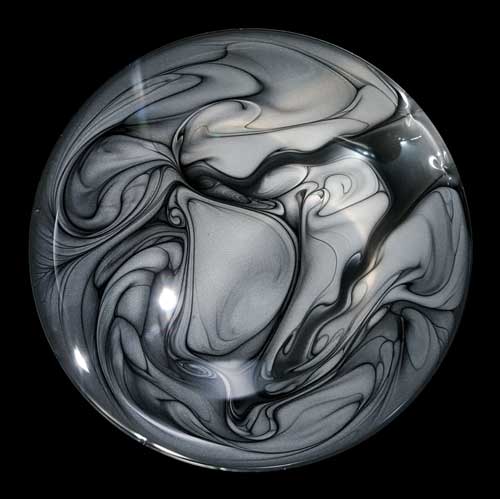| Posted: Apr 03, 2017 |
Conductive graphene ink wins science photography competition's top prize
(Nanowerk News) An image of spectacular swirling graphene ink in alcohol, which can be used to print electrical circuits onto paper, has won the overall prize in a national science photography competition, organised by the Engineering and Physical Sciences Research Council (EPSRC).
|
|
'Graphene - IPA Ink', by James Macleod, from the University of Cambridge, shows powdered graphite in alcohol which produces a conductive ink. The ink is forced at high pressure through micrometre-scale capillaries made of diamond. This rips the layers apart resulting in a smooth, conductive material in solution.
|
 |
| (Image: James Macleod, University of Cambridge) (click on image to enlarge)
|
|
The image, came first in two categories, Innovation, and Equipment and Facilities, as well as winning overall against many other stunning pictures, featuring research in action, in the EPSRC's competition - now in its fourth year.
|
|
James Macleod, explained how the photograph came about: "We are working to create conductive inks for printing flexible electronics and are currently focused on optimising our recipe for use in different printing methods and for printing onto different surfaces. This was the first time we had used alcohol to create our ink and I was struck by how mesmerising it looked while mixing."
|
|
The competition's five categories were: Eureka and Discovery, Equipment and Facilities, People and Skills, Innovation, and Weird and Wonderful.
|
|
One of the judges was physicist, oceanographer and broadcaster, Dr Helen Czerski, Lecturer at UCL, she said: "Scientists and engineers are often so busy focusing on the technical details of their research that they can be blind to what everyone else sees first: the aesthetics of their work. Science is a part of our culture, and it can contribute in many different ways. This competition is a wonderful reminder of the emotional and artistic aspects of science, and it's great that EPSRC researchers have found this richness in their own work."
|
|
Congratulating the winners and entrants, Professor Tom Rodden, EPSRC's Deputy Chief Executive, said: "The quality of entries into our competition demonstrates that EPSRC-funded researchers are keen to show the world how beautiful and interesting science and engineering can be. I'd like to thank everyone who entered; judging was really difficult."
|
|
"These stunning images are a great way to engage the public with the research they fund, and inspire everyone to take an interest in science and engineering."
|

